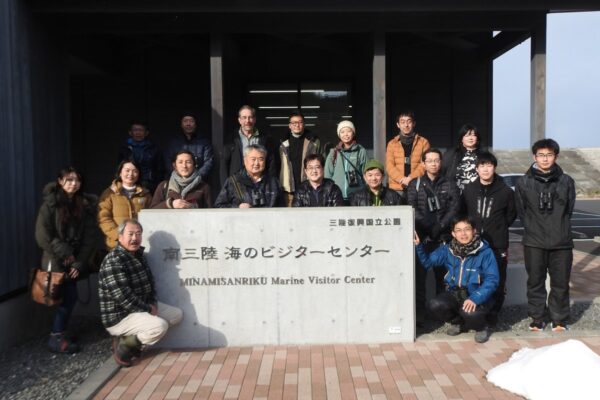-
International Workshop on Geese Conservation and Management in East Asia
Group photo © Katsumi Ushiyama/Japanese Committee of the Anatidae Working Group On 27 – 29th January, 2023, the Japanese Committee of Science and Technology of the Anatidae Working Group hosted the “International Workshop on Geese Conservation and Management in East Asia” with the support of The Miyagi Prefectural Izunuma-Uchinuma Environmental Foundation. The three-day workshop included experts’ meeting, an open symposium and an excursion. Dr. David Ward of USGS Alaska, Dr. Hansoo Lee of KoEco, Dr. Cao Lei of Research Center for Eco-Environmental Sciences, Chinese Academy of Sciences, were invited as international experts. The experts’ meeting started with an information-sharing session on the situation of geese conservation and management of each country, particularly on responsible organizations, protective status, population trends, monitoring and research. Nextly, Yusuke Sawa of Yamashina Institute of Ornithology reported the progress of the Brent geese action plan and recent tracking studies performed in Japan. The meeting was concluded with a fruitful discussion on finding research gaps, management framework and future actions for advancing geese conservation and management in East Asia. The symposium, live streamed and archived in YouTube , started with a plenary lecture from Dr. David Ward titled “Population Trends and Conservation of Geese in the Eastern Pacific Flyway” with recommendations for evidence-based conservation and management in the East Asian region. In the following session on “Geese of Japan”, Mr. Masayuki Kurechi of Japanese Association for Wild Geese Protection reported the achievements on the recovering cackling geese and snow geese, Dr. Tetsuo Shimada of The Miyagi Prefectural Izunuma-Uchinuma Environmental Foundation reported the issues concerning the abundant greater white-fronted goose, and Mr. Yusuke Sawa reported the recent progress of the geese tracking project in Japan. The next session was on “Geese in East Asia”, where Dr. Hansoo Lee introduced the outcomes of the nationwide water bird census and international cooperative research works for tracking migratory geese. Dr. Cao Lei introduced the status of 5 geese species in China, emphasizing the need to protect the Yangtze lakes, especially Poyang and Dongting Lake and their hydrological progress. © Katsumi Ushiyama/Japanese Committee of the Anatidae Working Group The symposium closed with a panel discussion building up on the conversation in the experts’ meeting. One of the main conclusion was to make a comprehensive international plan which can share goals, roles and principles for geese conservation and management in the East Asian region, as in the North American Waterfowl Management Plan. The major gaps to fill in for effective management were: 1) coordinated monitoring and analysis of population parameters, such as the survival rate based on banding survey and reproductive rate based on juvenile ratio monitoring 2) data sharing on tracking studies; 3) natural habitat conservation for declining specialist species, and 4) agricultural habitat management for increasing generalist species. To establish methods for evidence-based management of East Asian geese populations, the greater white-fronted goose was chosen as a model species for population modeling. The final day of the workshop was a field trip to three Ramsar sites, Izunuma, Kabukurinuma, Shizugawa-wan. The three-day workshop was funded by the Keidanren Nature Conservation Fund, Japan Fund for Global Environment, and Tsudo Fund of the Ornithological Society of Japan. Morning flight of geese in Izunuma © Katsumi Ushiyama/Japanese Committee of the Anatidae Working Group Rewatch the Symposium on Youtube: Prepared by Katsumi Ushiyama, Coordinator of Anatidae Working Group
Continue reading


